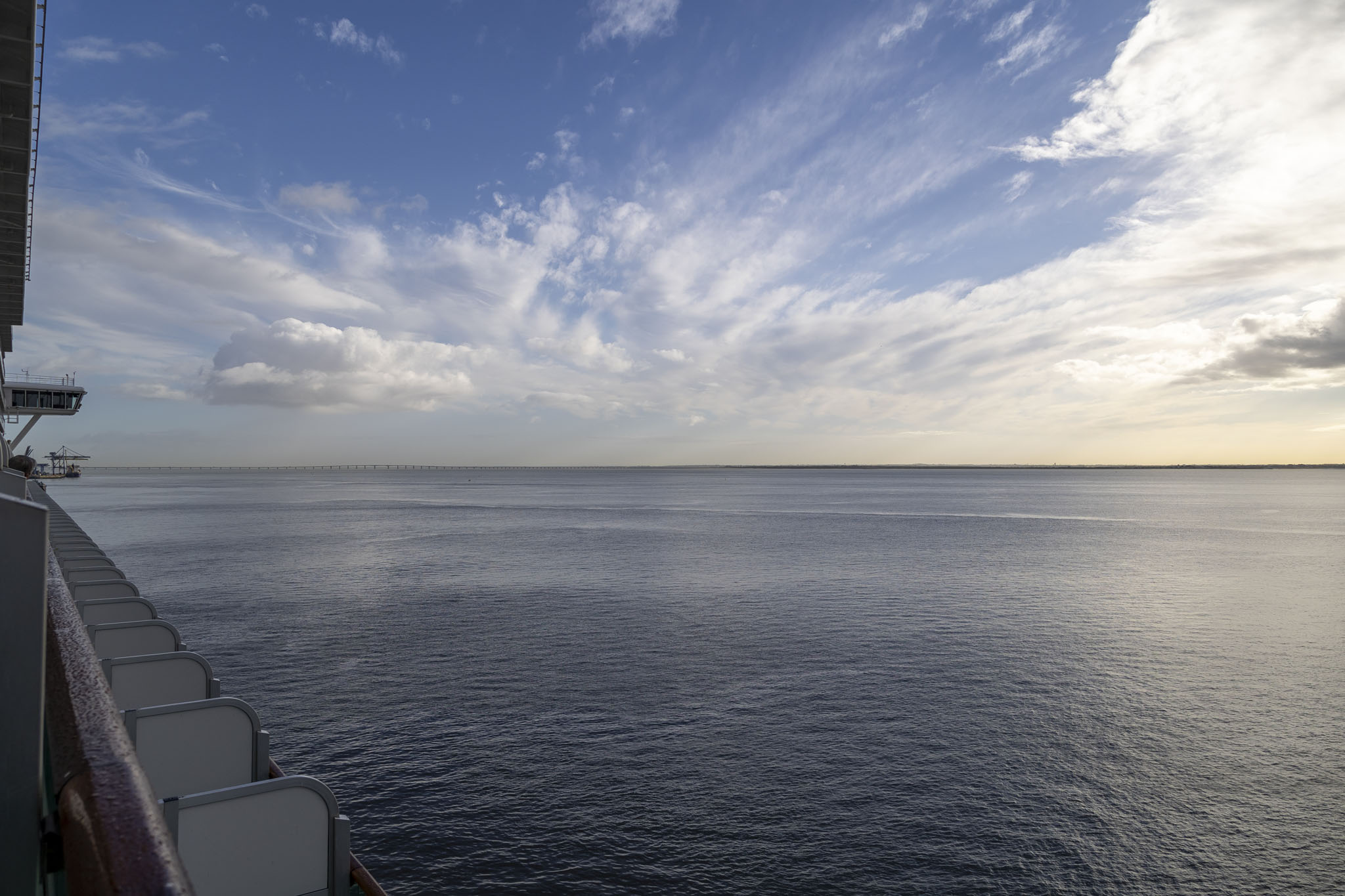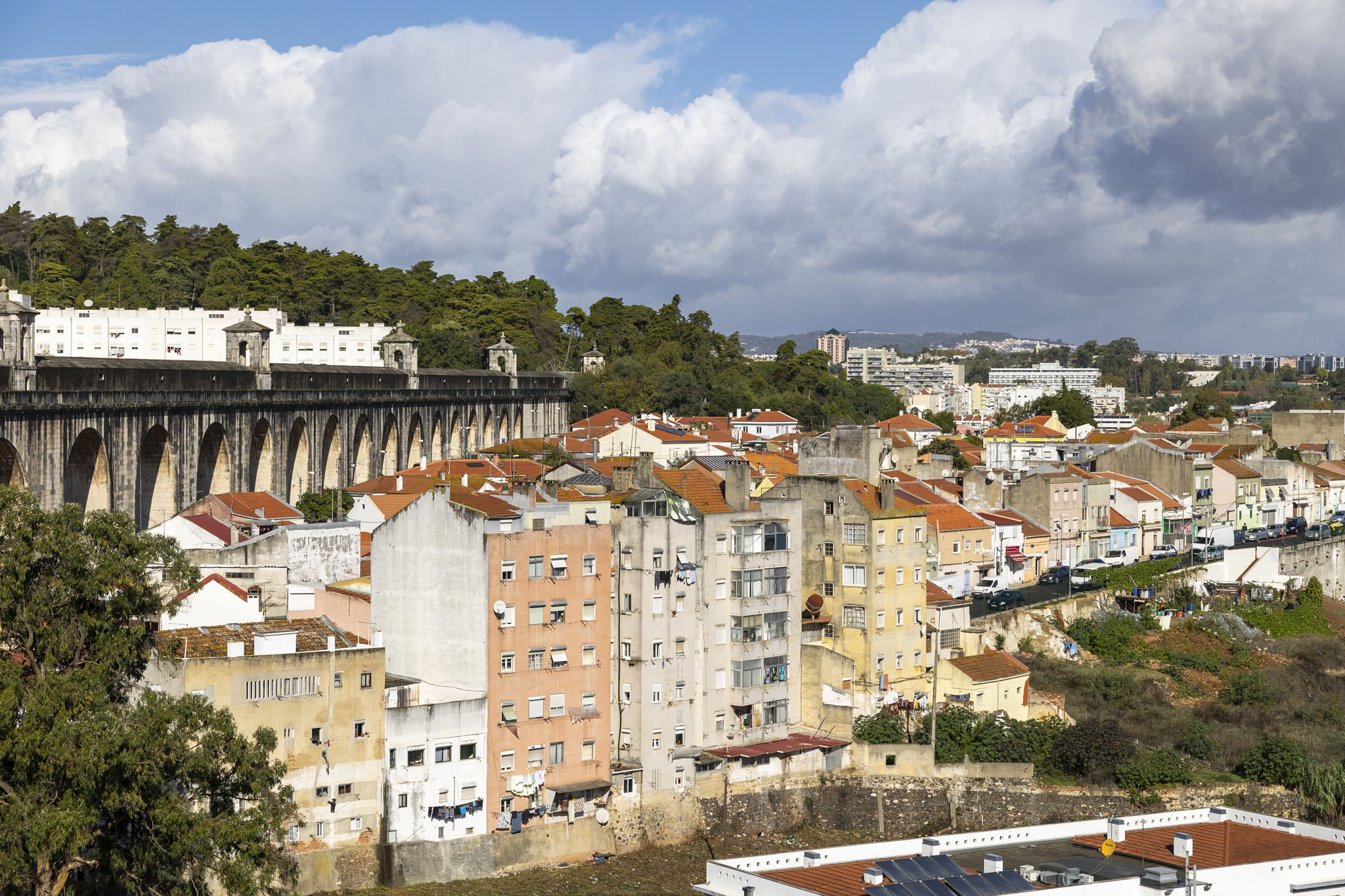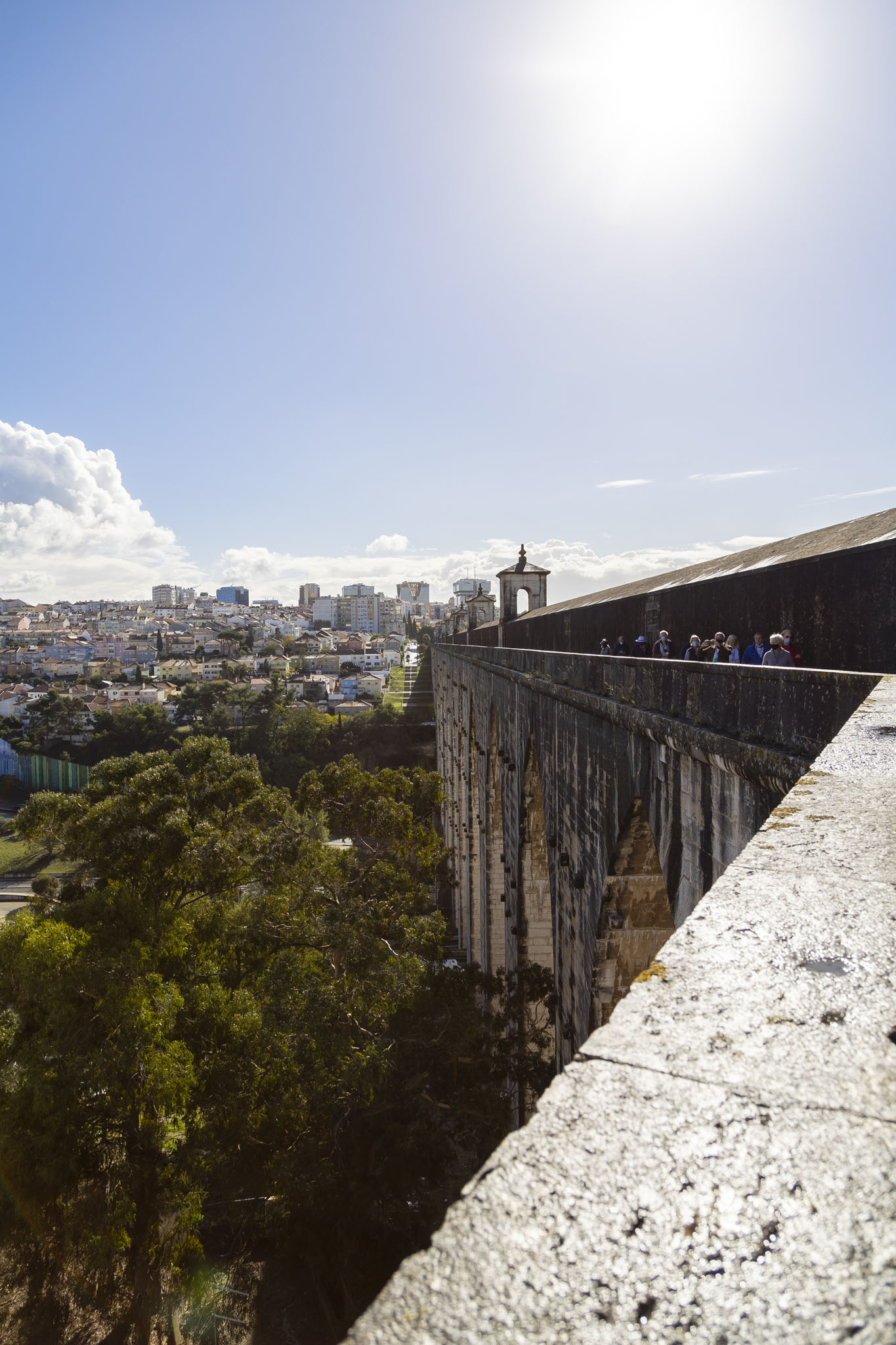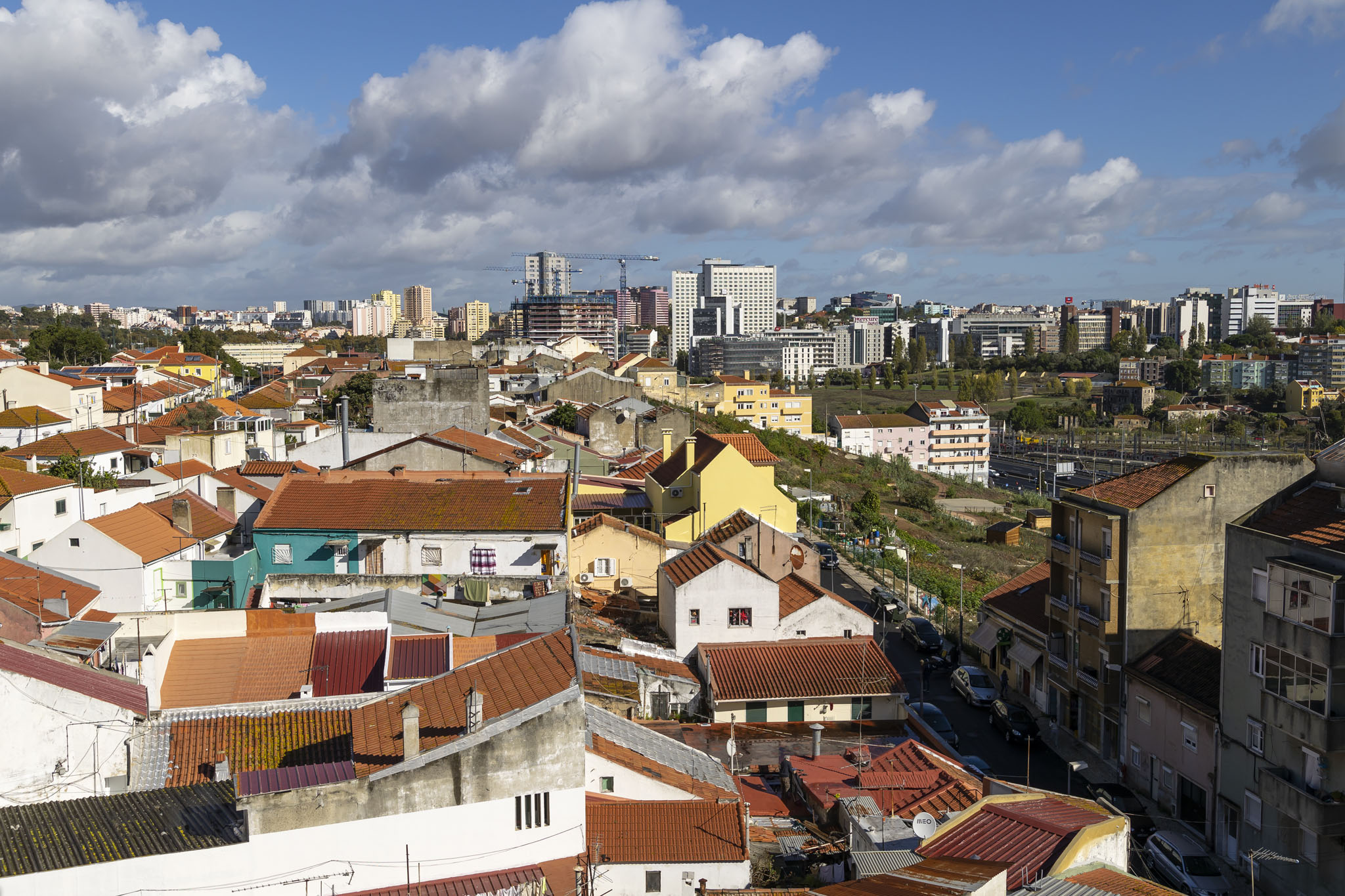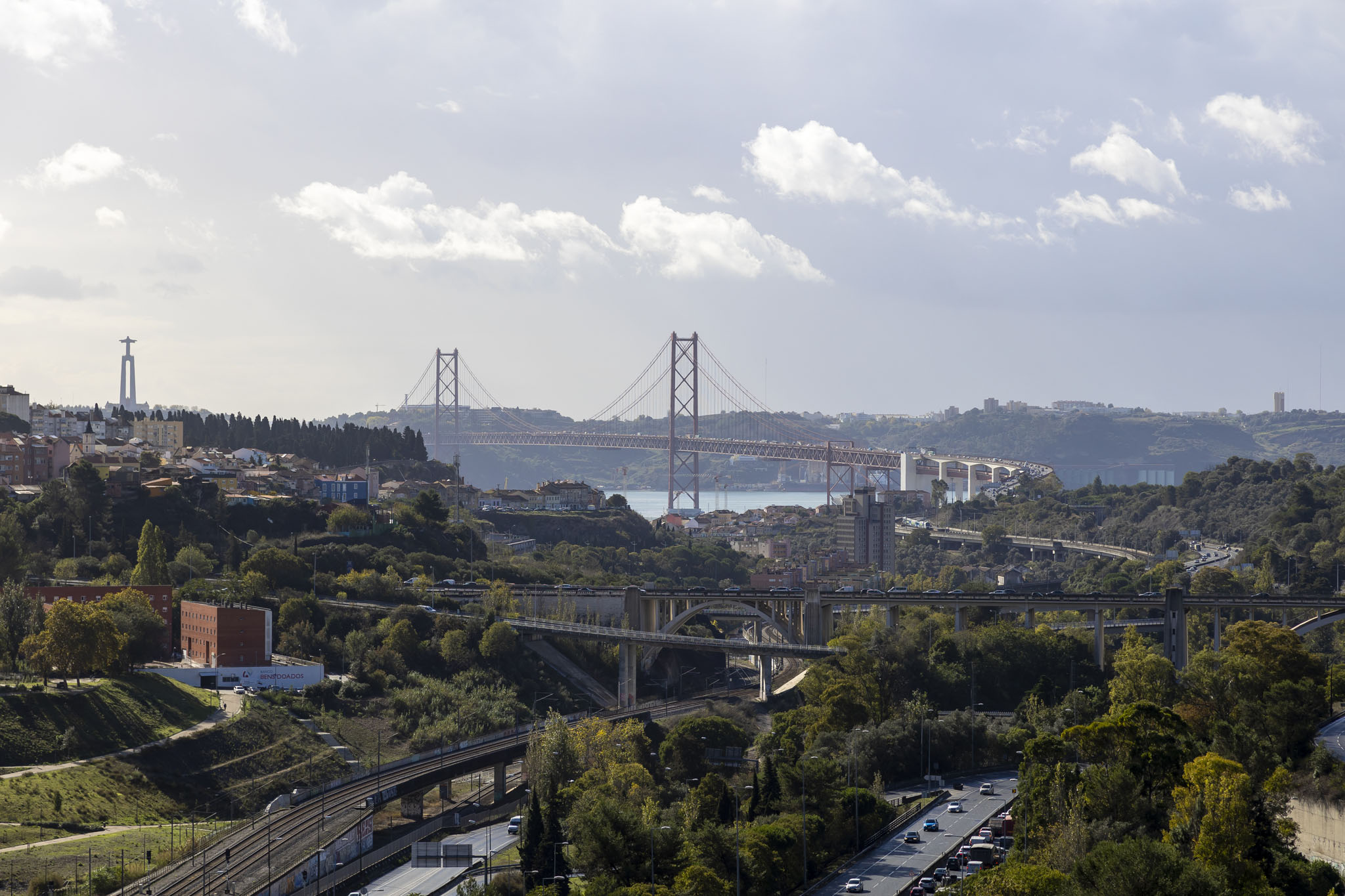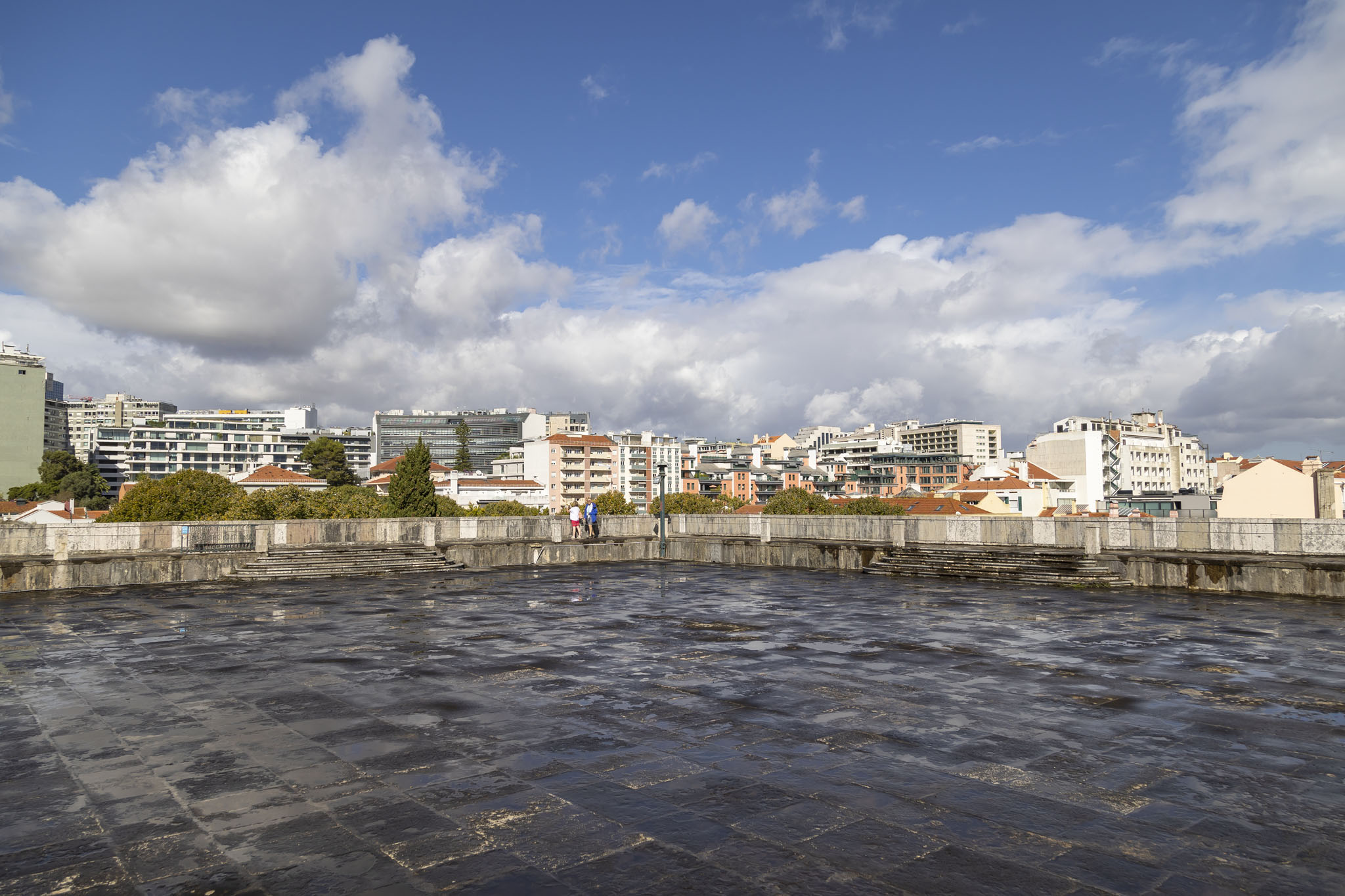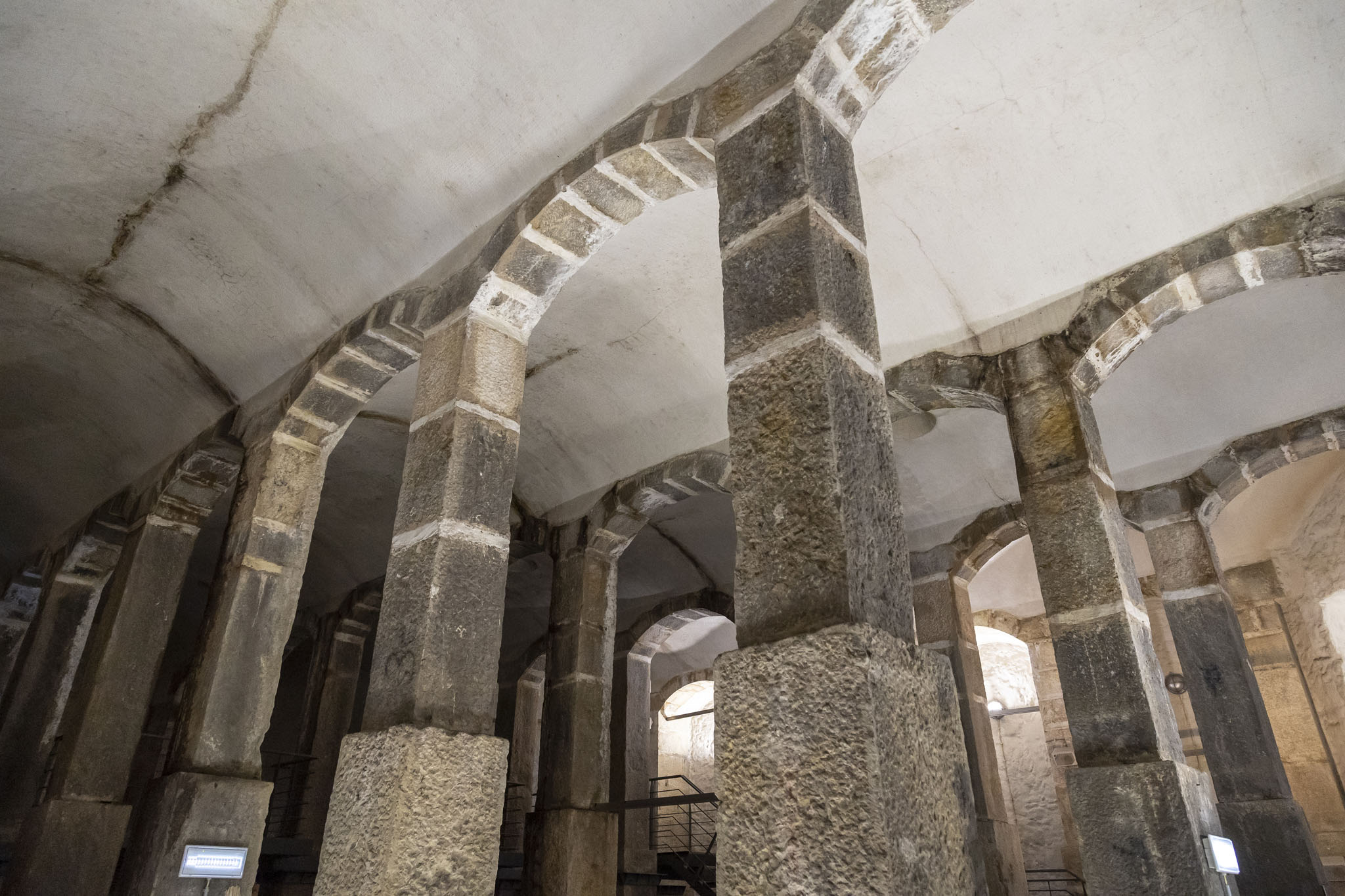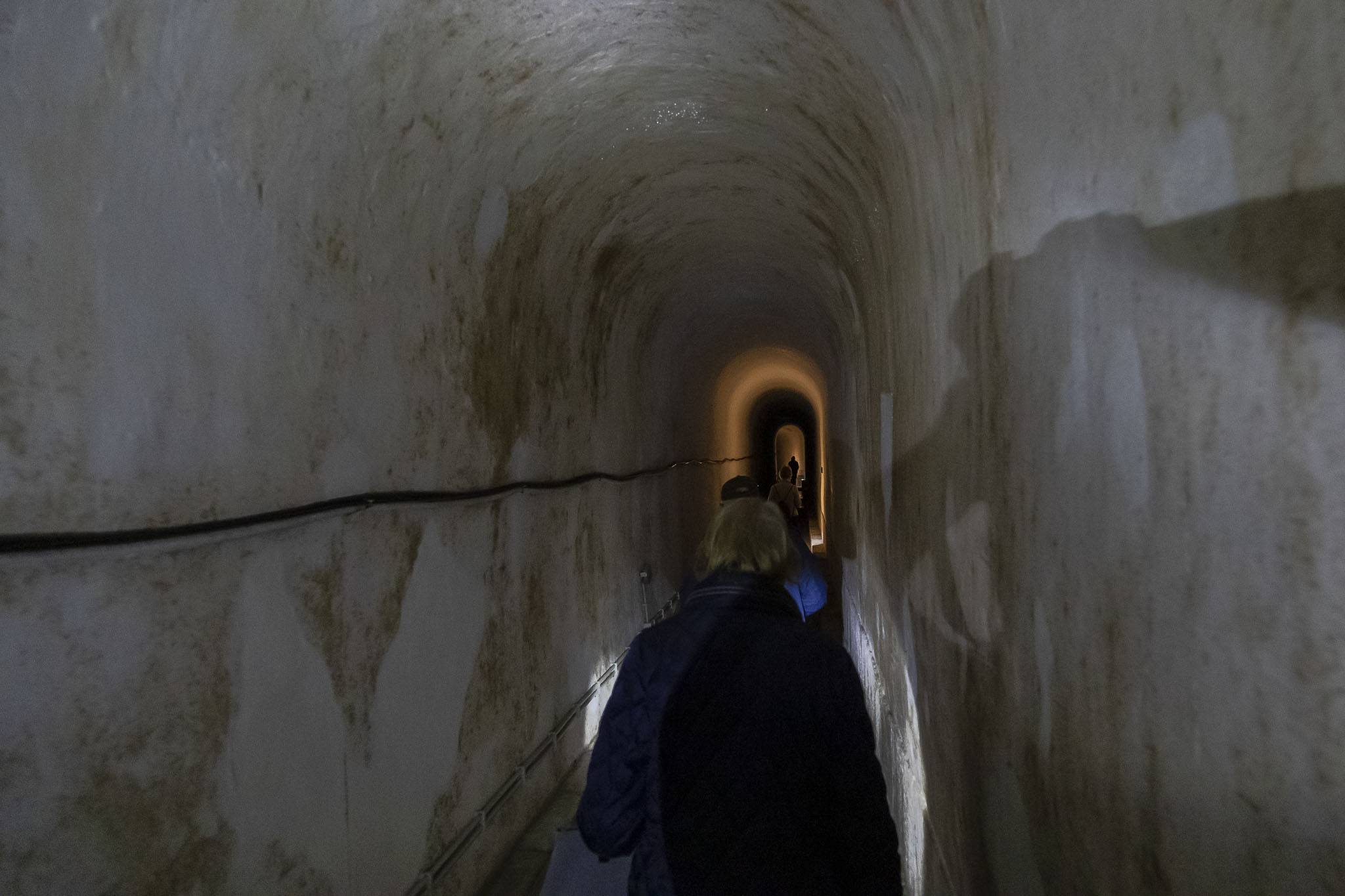Organised excursions aren’t for everyone on cruises. They aren’t for people who have no interest in history or architecture or the culture of the places they’re visiting. They aren’t for people who are tight-arses with their money despite laying down plenty on the cruise in the first place. They aren’t for people who don’t really like sharing their time and space with other people. Okay, so we’re arguably occasionally in that last group of people, but generally-speaking we have an interest in where we’re going and what there is to see, we like to learn some facts and get access to places we might not otherwise get, we like that someone else is arranging all the transportation and tickets, and we don’t mind paying a little for that convenience, even if it means we might be at the mercy of frequent toilet-users at some point. We have to try to remember that could be us someday.
After two full days at sea on P&O Ventura we woke up in the capital city of Portugal, Lisbon. Not only was this our first visit to Lisbon, it was also our first visit to Portugal.
“You’re going to Lisbon? Oh you have got to try the tarts, the egg custard ones, the pastel de natas, surely you’ve heard of them?”
“Yeah, we’ve heard of them. What else should we do in Lisbon? What would you recommend?”
“After the egg custard tart things?”
“Yeah, what else is there to do in Lisbon?”
“You could take a tram to an egg custard tart shop, I suppose. The trams are yellow, just like custard.”
“Do the Portuguese have some kind of mind-control ray that has been developed by custard tart bakers in Lisbon? Nod once if you’re under its control. We may be able to deprogram you.”
It was surprisingly difficult to get any must-see things in Lisbon from any of the people we knew who’d visited the city, although the people we knew were exactly the sorts of people who would say “Pay for a tour? When I can walk at random and possibly accidentally see something? I think not!” Even grudgingly pulling up some websites allegedly containing things to do didn’t produce a massive list of interesting or varied sights, with numerous suggestions being so far from Lisbon they hardly even counted. It felt like someone visiting London for the first time and being told “Definitely try some jellied eels, then take a trip to see Oxford University.” In the end we did what we always do when we’re visiting a strange place for the first time and that’s took a look at the excursions being offered for our cruise ship’s visit by the cruise line itself. Almost immediately we spotted a tour that included a visit to the aqueduct, a look at the reservoirs, a walk through some of the reservoir tunnels, then a walking tour of some of the city’s landmarks. Engineering works of art and history? Yeah, that ticked way more boxes than joining a queue at a place that sold tarts to tourists did.
The weather in Lisbon for our organised excursion with P&O can best be described as changeable. In that respect it followed the pattern of sunshine and showers that had been with us down the Bay of Biscay for the preceding two days. However, it was warmer than England (well, duh) and the showers were lighter and briefer. The view from our balcony was across the calm surface of the River Tagus.
From the port side of the ship we could see Lisbon itself. The church-like building prominent in a couple of the photos below is the former seventeenth century Church of Santa Engrácia, converted in 1916 to the National Pantheon. Within its interior are the tombs of celebrated national persons and cenotaphs. Our knowledge of famous Portuguese people is limited enough that only the cenotaphs of the explorers Henry the Navigator and Vasco da Gama trigger a bell of recognition. The Vasco da Gama Bridge which crosses the Tagus (pictured above as it could be seen in the distance from our balcony on Ventura) is the second longest bridge in Europe.
We had to meet ashore for this cruise excursion as opposed to meeting in a lounge or the theatre on board the ship. Meeting ashore is a far better way to do things, and particularly so when masks are still encouraged or required. No more sitting around uncomfortably warm for minute after minute after minute, no more listening to the same background music playing, no more trying to play the game where you guess which people at the ends of the rows of seats will pretend they didn’t hear the instruction to leave in an orderly fashion row-by-row so they can rush out and nab what they consider the best seats on the bus. Now, if those people are so absolutely desperate for the front seats they have to get off the ship early and spend all their time on the bus waiting for us instead.
I was quite pleased by the reflection in the wet surface of the dock at Lisbon of Ventura and, as you can see from the photo below, we were moored alongside MSC Virtuosa during our visit to Portugal.
After a short drive through the streets of Lisbon with a few of the sights pointed out, many of which we’d see on foot later, we arrived at the Águas Livres Aqueduct, part of what forms the historic Museu da Água (or Water Museum). We were early – it hadn’t opened when we arrived – and had to brave a fleeting shower before our guide popped back out of the office with keys to lead us on our way.
Lisbon is an odd choice for a location for a large city given its historical lack of fresh, drinking water but cities have a way of growing up where they want and Lisbon’s easy access to the ocean was attractive. The Tagus that flows beside Lisbon and out into the Atlantic also pulls in a lot of seawater into the estuary with the result being it’s too brackish to drink so water was transported from farther afield by aqueducts built by the Romans, but by the sixteenth century this wasn’t enough for the growing population and proposals were made to use and improve on what was already there to increase supply for the increased demand. It wasn’t until the early eighteenth century that proper taxation was levied specifically for the funding of the construction of the Águas Livres Aqueduct and this was eventually completed enough to start delivering water in 1748. The centrepieces of the design of the gravity-fed aqueduct were the 35 arches supporting the aqueduct and crossing the Alcantara valley. It was this part of the aqueduct that we would begin our Lisbon cruise excursion walking along.
The views over Portugal’s capital from the aqueduct were good, but not great. Lisbon is a fairly flat, arguably uninteresting city to look at from the air, although there are reasons for that which I’ll get to in a minute. However, it was nice to be above the valley with its main roads passing below us and its houses built up on the sloping hills either side. The tallest of the arches of the aqueduct reaches 65 metres in height and, like those across the main, highest, central section of the construction, is pointed in a Gothic style. The smaller, supporting arches on the lower sections of ground either side, though, have rounded arches instead, borrowing from Romanesque architecture and acknowledging the work of the Romans in first building an aqueduct system for the city.
In 1755 an earthquake centred in the Atlantic Ocean hit Lisbon resulting in fires, a tsunami, immense destruction, and a loss of life potentially as high as 50,000 people. Local people had rushed to the open docks assuming they were safer from the collapsing buildings around them, only to watch the water recede then rapidly flood back in. Candles that had been lit for religious reasons were knocked over and the city went up in flames. 85% of Lisbon’s buildings were destroyed, but the newly-constructed aqueduct survived intact. One positive aspect that came from the result of the fire was the birth of seismology, and there was a political shift away from some of the theological aspects of Portuguese society towards a more scientific approach, no doubt accelerated by the destruction of all the churches and perception that divine intervention had been somewhat lacking. Funny, that. The subsequent, relatively uniform look of Lisbon’s buildings and its generally low-level architecture can therefore be excused by having the city burned to the ground.
The main course of the aqueduct is 18 kilometres long and we were able to look along some of its length when we stepped through the interior chamber of Águas Livres. This gave us a view of the arched, protective tunnel and the stone gutter that would have held the pipe that delivered the water to Lisbon. Being gravity-fed, the aqueduct relied on the water coming from a higher elevation to a lower one and the shallow angle of the aqueduct meant that the time for water to make its journey to Portugal’s capital was measured in days. The aqueduct fed numerous fountains constructed in the city and was still in operation until the 1960s when it was finally decommissioned.
We had walked along most of the length of the northern side of the Lisbon aqueduct and after passing through the interior we returned to our starting point by walking back along the southern side. This gave us more interesting views as we could spot the Ponte 25 de Abril suspension bridge over the Tagus (we would cruise under there when leaving Lisbon later that evening, and you can see photos and videos of that in a later post in this travelogue series) as well as the Sanctuary of Christ the King sculpture, inspired by Christ the Redeemer in Rio de Janeiro.
However, what we mostly had was sunshine directly in our eyes so photo opportunities were more limited as we made our way back to the bus.
A short ride brought us to the next part of our tour of the Water Museum complex in Lisbon, the Reservatório da Mãe d’Água das Amoreiras (or Mother of the Water Reservoir).
Mãe d’Água is the largest of the reservoirs built to store water for the city of Lisbon. Completed in 1834 it can hold up to 5500 cubic metres of water. More than that, though, it looks really pretty. Brightly lit stone walls and columns reflecting in inky black water. Lovely. The church-like appearance of the reservoir was not accidental and you could almost be forgiven for seeing a statue of a religious figure on the far wall against the green background of the stones; that’s what I thought it looked like, anyway. That’s just pareidolia at work, though. The window at the top of the wall is from a viewing area at the back of the reservoir. Just below it is a stylised dolphin’s head which forms the end of the aqueduct and it’s from there that the water used to stream out onto the cascade – green and yellow with limestone build-up – and into the 7.5 metre deep pool.
Access to the viewing area is through a couple of archways built into the cascade and up a steep, narrow set of steps. You can see the view from the viewing area both along the aqueduct’s tunnel and down into the reservoir below.
Continuing up the steps – well, we had to as there was a large tour group that we were part of behind us – brought us onto the flat roof of the Mãe d’Água reservoir, and this provided us with more views of Lisbon from a relatively high vantage point. We had plenty of time to take a slow stroll around the top of the reservoir before making our way back down into the building.
Meeting up with our cruise excursion group outside, we then all took a short walk back to where the bus was waiting. This was just beside the commemorative arch built beside the aqueduct in 1748 to celebrate delivery of the first water through the system.
A very short bus ride brought us to the Principe Real Garden, but it wasn’t the garden that was the true destination.
Down a set of steps in the centre of the garden took us to another reservoir, the Reservatório da Patriarcal. Not as big, not as clean, not as attractive, and certainly not as filled with water as Mãe d’Água had been, but this reservoir had something else: a tunnel we could walk through.
After a short explanation of how the reservoir system operated we all put on lights strapped to our heads then set off on a walk through tunnels that would otherwise have been pitch black, were often barely over head height for me, were cool, echoing, a little eerie, but fabulous. The walk was around 400 metres long.
We emerged into daylight and relatively high heat and humidity once more at Miradouro de São Pedro de Alcântara, a landscaped terrace with a large fountain and some decent views across part of Lisbon again. This brought the aqueduct and reservoirs portion of our cruise excursion to an end.
In the next part of this P&O Ventura cruise travelogue series I’ll cover the short walking tour of Lisbon that we then commenced upon.
